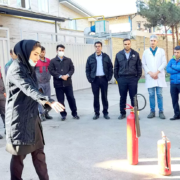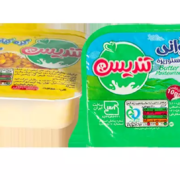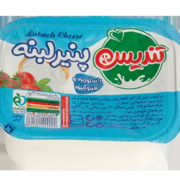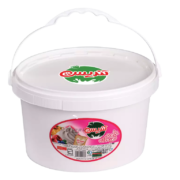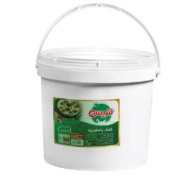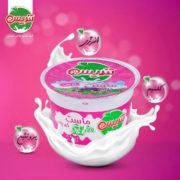news
Tandis Alborz branch was opened
/0 Comments/in news/by Arshia_dimaOn December 13, 1401, Tandis Salam Vatan company, in order to develop its products and increase the level of access to its customers, launched Alborz branch, Tandis Alborz food industry branch with the aim of launching and expanding the sales market and obtaining greater satisfaction of its customers in an area of 1500 square meters was launched, this branch has 150 tons of cold storage, multiple telephone lines, a mechanized loading platform and a new distribution fleet. Tandis Alborz branch provided the opportunity to create employment for more than 40 people on the first day of the opening of this branch. Sales and marketing of Tandis company, Engineer Shafiei and professional sales team were present with other colleagues from different departments of Tandis Central Company.
Another useful feature of this branch is access to a large number of loyal customers in Alborz province who can receive the quality products of Tandis company as soon as possible.
Tandis Salamat Watan Company was established in Nasirabad Industrial City in 2012 and made its best efforts to improve the quality parameters of people’s food basket. The year 2018 was a decisive year for Tandis Dairy Company and the change of management faced the company with a huge transformation. His Excellency Mr. Ishaq Mohammadi, with a brilliant history in the food industry and the dairy industry, at the head of the ownership of this complex, created a remarkable leap in the landscape of Tandis. The concern of creating a healthy production chain linked the organic farm and industrial and mechanized livestock farms to the complex of transformation industries with the most advanced and up-to-date equipment and the most experienced experts in order to provide natural, healthy and best quality products. Tandis has several branches, including Qom, Tehran, Rabat Karim, and the Alborz branch has been added to the number of branches of this company.

Winning the gold medal of the third national food health festival by Tandis company
/0 Comments/in news/by Arshia_dimaThe best of the 3rd national food health festival were introduced with the aim of improving the food health level of the society, and Tandis Salamat Vatan Company won the top title and received the golden statue of this festival. According to public relations of Tandis company, among the best of the third national food health festival, Tandis company was able to win the golden statue of this festival by obtaining the necessary points. The third edition of the National Health Festival was held with the aim of changing the pattern of nutrition and improving the level of awareness, attitude and culture of healthy eating in the society and with the approach of improving the level of food health and achieving a healthy and dynamic society at the national level. In this festival, by evaluating food products based on three axes of food health, food quality and food quantity, the jury introduced the leading brands in research, development and health promotion of food products. According to the announcement of the secretariat of this festival, Tindis Company succeeded in receiving the golden statue of the National Food Health Festival in 1401. The third edition of the National Health Festival was held on Tuesday, November 24, at Shahid Beheshti University in Tehran, with the presence of officials from the country’s health department. Teaser of Tandis company’s successful participation in the third food safety festival
Fire fighting training at Tandis Salamat Watan Company
/0 Comments/in news/by Arshia_dimaThe first firefighting training course for the personnel of Tandis Salamat Watan Company was held This training course was held with the presence of Mr. Mahmoudi’s administrative manager and HSE consultant of Tandis Sarkar Khanum Basiri Tandis Salamat Watan company has more than 500 employees and a dedicated space of 21,000 square meters in the field of safety improvement, HSE topics, and specialized training. In this training, various types of fire fighting classes were discussed, including how to deal with fires caused by ash solids, flammable liquids, flammable gases, electrical devices, etc. And at the end, the practical work of this course was taught by implementing simulated cases and using different types of fire extinguishers.
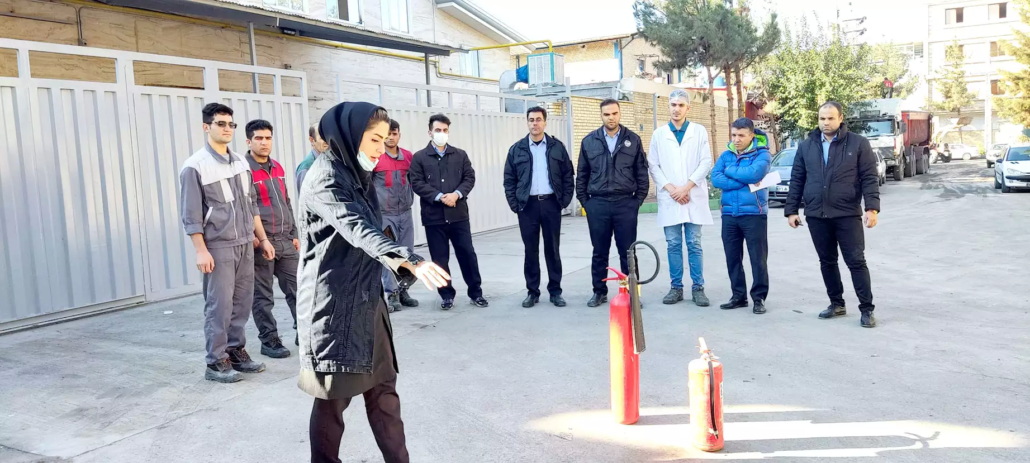
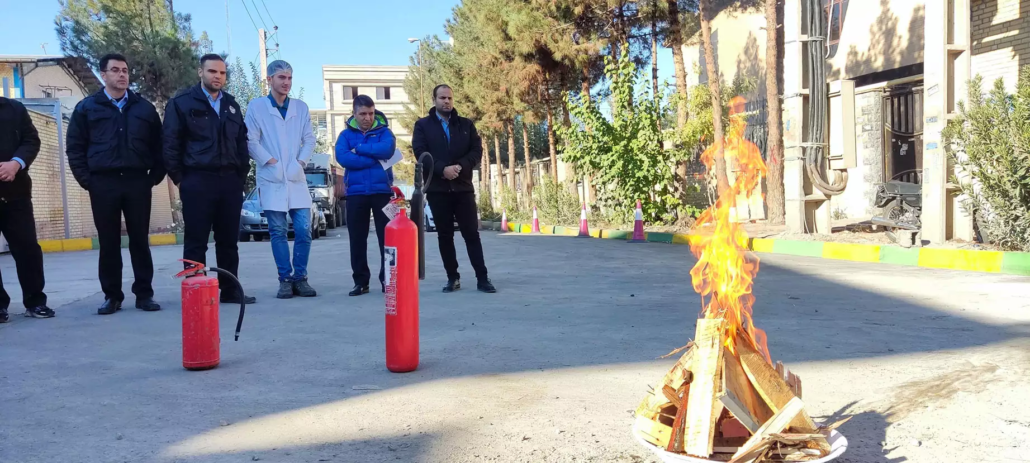
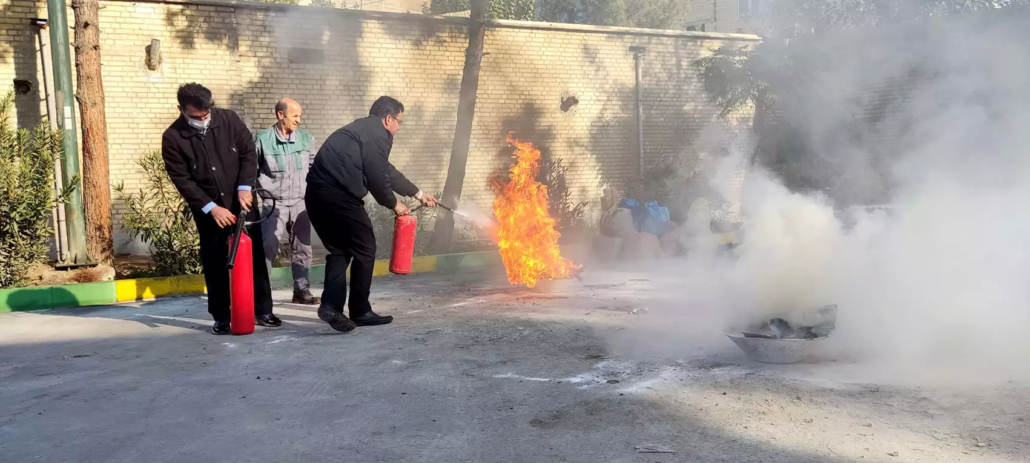
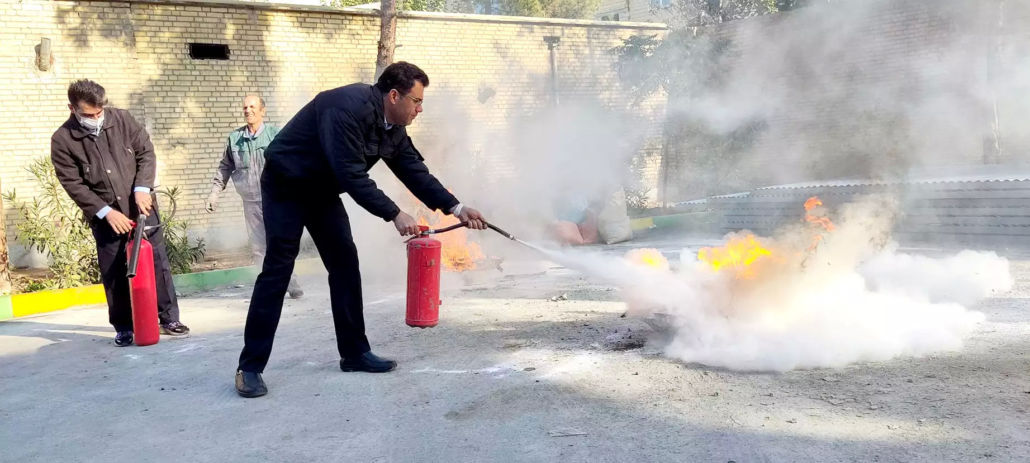
How to prepare butter
/0 Comments/in news/by Arshia_dimaThe first step is to deliver completely clean and pasteurized milk to butter factories without the slightest contamination.
Initial rubbing
The cream enters the creaming cylinder, which has a stirring device and a motor with the ability to adjust different speeds. The churning cylinder quickly stirs the cream and turns it into butter, and after that, the seeds and buttermilk are transferred to the separation section, which is also called the primary rubbing section. In this part, the butter is separated from the buttermilk and the first stage of washing the buttermilk is done by this cooled buttermilk which has flowed again in the machine.
Secondary rubbing
Then the material is pushed to the next stage by means of a screw-like tool and rubbed. With the help of this section, the butter is transferred to the pressing and drying section. In fact, this section has a funnel-shaped channel and a perforated plate through which the butter passes. The pressing and drying section removes the buttermilk remaining in the butter and directs the butter grains to another section called secondary rubbing.
This section performs the rubbing operation in vacuum mode to reduce the air in the butter as much as possible. After performing the above processes, the final product is taken out from the exit part, which is in the form of a continuous strip. The resulting product is transferred to packaging machines with the help of storage container.
Butter production using non-continuous method
In the non-continuous method, a churning wheel is used in such a way that the cream is placed inside this wheel and the faster the cream is stirred, the faster the churning process is done.
Standard duration mode for Korea
In the standard mode, the time required to produce butter is 35 to 45 minutes. This section has a glass window where you can see the complete process of butter production from this section.
buttermilk production
If you observe this process through a glass window, you will see that first the cream flows like milk and gives a milky matte color to the glass, then gradually the grains of butter appear on the glass.
After the formation of butter grains is observed, the rotation speed of the wheel is reduced and they continue to rotate the material slowly for a few minutes, and then they stop it and remove the buttermilk produced from buttering.
After removing the buttermilk, the butter grains are washed and salted, then the butter rubbing operation begins. Rubbing the butter causes the grains of butter to stick together and distribute the water particles evenly in the oil.
The wheel itself can be used to rub the butter in such a way that after washing the butter grains, the wheel is turned slowly, as a result, with the help of the pressure exerted on the butter material and the blows that occur when the material hits the wall of the wheel, Butter is rubbed.
packing
The materials that are used for the packaging of butter production must have characteristics such as being impervious to aromatic substances, fat, light, moisture, etc. If these conditions are not considered, it will cause the butter to oxidize and change its color to a deep yellow.
How to make cheese
/0 Comments/in news/by Arshia_dima– Raw milk reception and storage stage
The milk used to produce cheese must be of good quality. This milk should have few germs and bacteria and it should not be milked from a sick animal or an animal under antibiotic treatment. For example, mastitis disease in livestock causes many changes in livestock milk and lowers the quality of cheese.
2- Milk standardization stage
White cheese consists of three elements: fat, dry matter and protein, and the percentage of each of these elements varies depending on the type of cheese and its preparation method.
The separation of fat from milk is done according to the type of milk, at a temperature of 55 degrees Celsius, and then the milk fat is adjusted according to the type of cheese, and the standardization of the ratio of casein and fat in milk is done in the production line.
3- Fermentation stage
This step begins with the addition of starter bacteria. Starter bacteria, a group of lactic acid-producing microbes that are also present in yogurt. The main purpose of adding these bacteria to milk is to reduce the pH of milk and make it acidic, along with the formation of curds.
The amount of acid produced in cheese making milk is very important for the texture of cheese and its taste. Also, by producing gas, these bacteria cause holes in the cheese tissue.
Rennet is the main substance that coagulates milk and creates cheese curds. This substance is obtained from the stomach of a baby calf. The constituent elements of this substance are chymosin (which is the main cheese-making enzyme) and another enzyme called pepsin. In recent years, due to the scarcity of calf rennet, the use of substitute compounds such as rennet obtained from other animals and microbial rennet has become common. Microbial cheese has good performance and price. The time interval between adding the starter bacteria and rennet to the milk is called the ripening stage. Fermentation is done at a temperature of about 42 degrees Celsius.
4- Clot operation stage
After fermentation, enzymatic and chemical reactions take place in the milk, and then the coagulation of the milk takes place and the milk turns into clots or curds.
At this stage of cheese preparation, first the soured milk is stirred well until it becomes completely uniform and it is placed in the tub slowly and without movement until coagulation takes place. After the formation of the clot, to facilitate the exit of the water from it, special wire combs make cuts in the form of small cubes on it. After cutting, the slices remain in the tub for a few minutes, and are gently beaten. Then the whey is drained from the tub. After that, it is the turn of salting with pasteurized salt water. At this stage, to improve the quality of cheese texture, 0.1 to 0.2% calcium chloride is added to the salt water.
How to prepare cream
/0 Comments/in news/by Arshia_dimaInitial preparation stage
Cream is prepared in the pasteurized milk production line. Therefore, the milk needed to prepare cream is the same milk used to produce pasteurized milk. This milk should be free of antibiotics, water or any other additives.
The acidity of this milk should be 0.14 to 0.16 in terms of lactic acid and its pH should be between 6.6 and 6.8. The milk fat used should be at least 2.3% and its dry matter should be 8%.
Creaming stage
In the traditional way of preparing cream, or Sarshir, the milk was kept still for a while until the fatty phase came on the milk, which is a time-consuming task. Therefore, to speed up the preparation of cream, a cream separator called a separator is used. This device works on the basis of centrifugal force. The purpose of creaming is to move the maximum amount of milk fat to the cream section and the minimum amount to the rear milk. Today, in these devices, foreign particles and fat are separated from milk at the same time.
Standardize the cream
Standardization of milk fat and cream is necessary to prepare different creams. Part of the separated cream in the separator is used to standardize the milk and the rest is used to prepare cream and butter. Cream with more than 30% fat is produced, then by adding skimmed milk or whole milk, its fat percentage is standardized. Colostrum has between 0.05 and 0.07% fat. Standardization of cream is done either by fully automatic machines or the ratio of adding each ingredient is calculated by the Pearson square method.
Principles of homogenization in the preparation of cream
The act of homogenizing the cream stabilizes the emulsion and increases the rheological properties of the cream. When the homogenization process is combined with pasteurization, the cream is placed between the thermal recovery section and the pasteurization heating section; That is, the cold cream enters the thermal recovery section and its temperature reaches about 50 to 55 degrees Celsius, after which this cream is transferred to the homogenizer. After homogenization, the cream enters the main heating part in the pasteurizer. Homogenization of cream is done under 200 bar pressure. Typically, creams with a lower fat percentage need to be homogenized at high pressure, but other creams can be homogenized at lower pressures. In the preparation of cream, it is better not to homogenize, because this process causes the loss of some properties of the cream.
How to prepare cream
Thermal process stage
The high fat of the cream makes microbes resistant to the thermal process. For this reason, the preparation of cream requires more intense pasteurization conditions than the preparation of liquid milk. After pasteurization, the cream should be cooled quickly and the alkaline phosphatase test should be negative. The criterion for the correct pasteurization of cream is the inactivation of the peroxidase enzyme. This enzyme has more thermal resistance than alkaline phosphatase. Therefore, it is clear that if the peroxidase enzyme is deactivated, the alkaline phosphatase enzyme is also lost. In cream pasteurization, both tube and plate thermal conversion are used. Pasteurization of normal creams is done by plate heat conversion, but creams with a higher fat percentage need tubular heat exchangers. In small amounts, pasteurization can be done in double-wall tanks in a non-continuous way.
Pasteurization conditions in the preparation of cream
Cream pasteurization conditions change as its fat percentage increases.
Cream with 10 to 20% fat
75°C for 15 to 20 seconds.
Cream with more than 20% fat:
80 degrees Celsius for 15 to 20 seconds.
Most of the bacteria, yeasts and molds in the cream are destroyed by pasteurizing the cream. But some heat-resistant or thermophilic bacteria can tolerate the temperature of this process. Spores are not destroyed during the pasteurization process. The heat process of the cream can affect its properties and cause it to smell and taste like sulfur. During this process, natural milk enzymes like lipase are deactivated. Therefore, the shelf life of cream increases compared to milk. Before leaving the pasteurizer, heat exchange the pasteurized cream with the incoming cream to reduce its temperature. Then it enters the cream storage tanks. At this stage, stabilizing and thickening compounds are added to the cream. Then the cream is sent to the packaging department.
How to make curd
/0 Comments/in news/by Arshia_dima. Preparation of raw materials
The first ingredient required to produce this product in factories is fat-free yogurt.
First, the milk is delivered to the factory, the quality of the received milk must be high. Also, milk should be free of disinfectants and antibiotics. In addition to the health of the milk, this is necessary for the proper growth and activity of the yogurt. The microbial load of milk should also be low and its acidity should not be more than 17 degrees Dornic.
The milk is then pasteurized in two ways to produce curd:
Continuous pasteurization: between 5-15 minutes at a temperature of 90-95 degrees Celsius.
Non-continuous pasteurization: 30 minutes at 85-85 degrees Celsius.
Then the milk is cooled to a temperature of 42-43 degrees Celsius to add the starter culture. In tanks, the starter culture is added to the milk in the amount of 2-3% by volume. Since the final product is curd (not yogurt), fermented milk is incubated in the same tanks for approximately 3 hours.
2. Cooking and thickening yogurt to produce curd
At this stage, the sour yogurt obtained from fermentation is heated at boiling temperature for almost half an hour. The purpose of this work is to change its aroma, taste and color. Yogurt cooking process takes place in a double-walled tank. As a result, those proteins are denatured and yogurt thickens by losing its water content (evaporation).
Now it is necessary to cool the condensed yogurt before entering the separator machine. In the separator, the remaining water content of yogurt is also separated from it. As a result, the dry weight of the product increases. filter cloths can also be used to separate the amount of water remaining in the yogurt. These filter cloths are completely clean and they dehydrate by pouring yogurt in them.
The water that is separated in this part is then condensed through heat and used for the production of Qaraqrout.
Homogenize the curd
In the industrial production of curd, this product is produced in liquid form. Then they add salt and ingredients such as dry milk powder or juniper juice powder to it and then homogenize it.
Some curd manufacturers perform the homogenization process. For this, the product is placed at a temperature of 60 degrees Celsius under a pressure of 100-120 bar.
. Curd pasteurization
Pasteurization in the production of curd is for the thermal health of the product. This process is done to eliminate pathogenic microbes and reduce spoilage-causing microorganisms. As mentioned, keshk has a lot of nutrients, so it is a good environment for the growth of microorganisms.
In curd production factories, this process is usually done within 10 minutes at a temperature of 88 degrees Celsius or within 30 minutes at a temperature of 65 degrees Celsius. Also, for this process, boilers with stirrers, which are made of steel and have two walls, are used.
Pasteurization in curd production, in addition to destroying harmful microorganisms, causes solid materials, including salt, to be mixed uniformly.
Then, before packaging, it is necessary to lower the temperature of the product to about 55-60 degrees Celsius.
How to prepare yogurt
/0 Comments/in news/by Arshia_dimaFirst step: Dissolve yogurt in some water or milk. Yogurt must be completely dissolved in milk or water, otherwise there will be lumpy impurities in the buttermilk.
Tip: To dissolve the yogurt in milk or water better, you can put it in a closed jar and shake it for a few minutes until the yogurt is completely dissolved in the liquid.
2- The second step: In this step, put the water and milk on a gentle heat to warm up.
3- Third step: Add the yogurt and salt solution to the heated milk and water, stir until they are completely dissolved and no impurities remain.
4- The fourth step: pour the final solution into a container with a lid and place it in a warm place. You have to wait for a while to have the final buttermilk product. After a day, you will have sweet and delicious yogurt. But if you like sour buttermilk, you have to wait 2-3 days.
Buttermilk of eight plants has brought you a new taste of this popular and old drink. The existence of mint, kakuti, marzeh, dill, thyme, basil, oregano and tarragon in buttermilk of eight idol plants will bring you a new experience of drinking buttermilk. In addition to having a unique taste, eight plant buttermilk has various properties due to the presence of various vegetables.
How to prepare pasteurized or industrial method (ordinary yogurt)
1- Bringing the amount of milk fat and dry matter to the standard set by the laws of the country
In factories to prepare yogurt, they must first adjust the milk fat so that the amount of fat in the yogurt becomes the same percentage as listed on the product. In the case of dry matter, by adding condensed milk or fat-free milk powder, in the amount of 0.5 to 2.5%, the dry matter of milk is adjusted.
2- Adding additives
The type of these ingredients depends on the type of yogurt. Stabilizers and sweeteners in the form of glucose and sucrose are used in fruit and flavored yogurts. Stabilizers make the yogurt thicken and absorb water and prevent the yogurt from being runny. Of course, ordinary yogurt does not need a stabilizer if it is made properly and the relevant points are followed.
3- Homogenize
The rise in temperature causes fat to form on the surface of the fermented milk and the so-called yogurt closes, which has many fans in Iran. But in factories, this fat must be present in all yogurt in the same and controlled amount. For this purpose, they homogenize the milk used in the factories.
4- Pasteurization of used milk
This action is performed due to the destruction of harmful germs and bacteria. These harmful bacteria prevent the activity of beneficial milk bacteria.
5- Cooling the milk to 45 degrees after boiling (fermentation temperature)
This process is done by passing the milk through special coolers. After this, fermentation should be done quickly, because as the temperature of the milk drops, the microbes that are deactivated by boiling the milk will be activated again.
6- Femininity
Yogurt is a substance that increases the acidity of milk and creates the flavor of yogurt. This substance is produced by the activity of two types of bacteria, Streptococcus thermophilus and Lactobacillus bulgaricus, which usually have an equal ratio of these two bacteria to create this substance.
7- Storing the mixture of milk and sour cream in a warm house
After the process of fermenting the milk, it is kept in special rooms with a temperature of 45 degrees for 3-4 hours until the milk coagulates and turns into yogurt.
If you don’t follow the instructions on how to prepare yogurt, problems such as sour and bitter yogurt, runny or gassy yogurt will occur.





